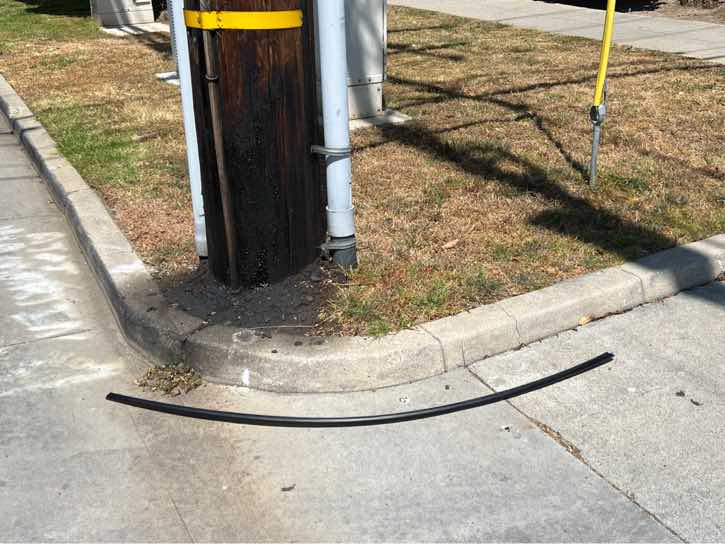

Reading The Markings On Fiber
Optic CablesWisdom From The StreetWe found this cable laying in the gutter. What a find! A short length of Corning Rocket Ribbon 864 fiber cable left over from an installation by a contractor. We brought the cable back to our office with the intention of opening it up and creating a video about the construction of this modern high fiber count cable, but something got our attention first. The cable had a very long line of printing on it with lots of interesting and useful information. So before we started deconstructing it, we decided to photograph the printed information and interpret it.  Click on the photo above for a bigger photo. Or read on.  The text on the cable starts with the Corning product name "Corning Rocket Ribbon (TM) Optical Cable," date of manufacture "01/2022" and a serial number. The phone handset graphic denotes this as a telecom cable.  Here is the most important information:
There is a lot of information in those few inches along the cable that every installer needs to know. Since it is an OSP cable, we assume it is singlemode fiber, of course. When you are fusion splicing this cable you need to know the coating diameter for choosing the proper fixturing for your fusion splicing machine. The weight of the cable is important if the cable is being lashed to a messenger because it is used to calculate loading on the messenger and can determine the size and tension on the messenger. The minimum bend diameter is important if the cable is being coiled or pulled over a capstan, sheaves or blocks. And the pulling tension applies if the cable is pulled, not in the case of aerial installation like this one.  The next text is the cable model number and the length. "SR-5B9MR-864" is a Corning SST (Single tube) UltraRibbon Gel-Free Cable with low water peak fiber. And finally, the cable has distance marked - "00030 FEET" - on this cable it's updated every 2 feet. knowing how much cable is on the reel or the distance at the other end of the cable on the reel allows keeping track of how much cable was used and how much was left. Here is an excellent example of why you need to learn to read cables. There is a lot of useful information and some is critical for proper installation of the cable. On the next job, take a minute and read the cable you are installing; you might learn something interesting and useful too. Note: This is an outside plant cable. Indoor cables should have similar information but also include some note of being tested for flammability such as a UL registration. Return to the FOA Guide Table of Contents. |
|
|
|
|